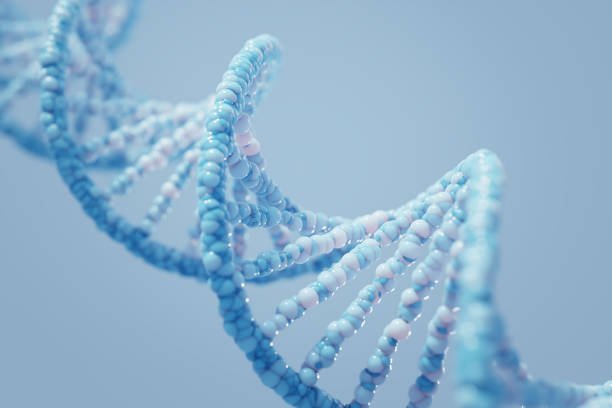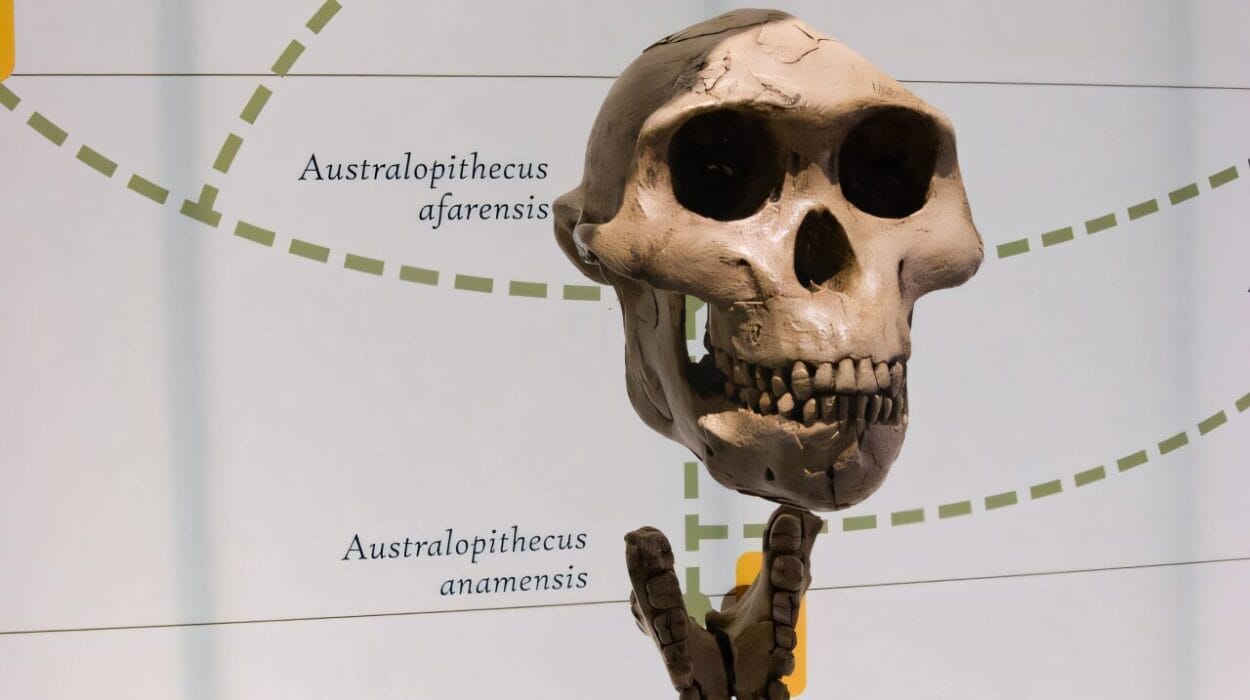The human genome is, in many ways, a living map of our biological heritage. It’s a complex tapestry of information that shapes every aspect of who we are, from the color of our eyes to the health conditions we may be predisposed to, and even our ability to think and feel. Decoding it has been one of the most ambitious and profound scientific endeavors of modern history. The journey through the human genome is not just a scientific one; it is a journey into the very essence of what makes us human.
In this article, we will explore the fascinating and transformative discoveries made so far in the field of genomics. We will look at how our understanding of the human genome has evolved over time, the milestones that have shaped this journey, and the future of genomics, particularly how it could affect medicine, technology, and our understanding of life itself.
A Historical Overview: From Concept to Sequencing
Our story begins not in the laboratory but in the realm of speculative thought. The concept of genetics has existed for centuries, but it wasn’t until the early 20th century that it began to take shape as a scientific discipline. Gregor Mendel’s experiments with pea plants laid the foundation for understanding inheritance. However, it wasn’t until the discovery of DNA in the 1950s that the true scope of human genetics started to come into focus.
James Watson and Francis Crick’s landmark discovery of the double helix structure of DNA in 1953 provided a breakthrough that sparked an explosion of research into the molecular mechanisms that govern heredity. The realization that our genetic code is written in the language of nucleotides—adenine, thymine, cytosine, and guanine—formed the cornerstone for the field of molecular biology. The next logical step was to decode the entire sequence of the human genome.
In the 1990s, scientists began what would become the Human Genome Project (HGP), an international collaborative effort to sequence the human genome. The idea of mapping every single nucleotide pair in human DNA seemed like an insurmountable challenge at the time. Yet, thanks to advancements in technology and international collaboration, the project was completed in 2003—well ahead of its initial 15-year timeline. This achievement, considered one of the greatest scientific feats of the 21st century, sequenced all 3 billion base pairs in the human genome.
What We’ve Learned So Far: Unraveling the Mysteries of Human DNA
The completion of the HGP was a monumental achievement, but it didn’t mark the end of our journey. In fact, it was just the beginning. The genome sequence provided a massive amount of data, but understanding what this data meant took much longer. After all, sequencing DNA was one thing; interpreting it was another entirely. Let’s dive into some of the most significant insights gained from this effort.
The Number of Genes
When scientists first embarked on the Human Genome Project, there was a prevailing hypothesis that humans would have tens of thousands of genes—maybe even over 100,000—much more than any other organism. However, when the first drafts of the human genome were published, it was revealed that we only have about 20,000 to 25,000 genes. This is fewer than the number found in many simpler organisms, such as the roundworm, which has around 20,000 genes as well.
At first glance, this was a surprise. How could humans, with our vastly more complex bodies and brains, have fewer genes than simpler creatures? The answer lies in the complexity of gene regulation. It turns out that humans have developed a sophisticated system for controlling gene expression, using fewer genes to produce a much wider array of proteins through a process known as alternative splicing. This allows the same gene to produce multiple different proteins depending on how it is regulated, adding an additional layer of complexity to our biology.
The Role of Non-Coding DNA
Perhaps one of the most unexpected findings from the Human Genome Project was the discovery that only about 1-2% of our DNA actually codes for proteins. This means that the majority of our genome is composed of “non-coding” DNA, once thought to be “junk” DNA with no functional purpose. However, as research continued, it became clear that this non-coding DNA plays critical roles in regulating the genes that do code for proteins.
Scientists now understand that much of this non-coding DNA is involved in controlling when, where, and how genes are expressed. These regulatory elements—such as enhancers, silencers, and promoters—help to ensure that genes are turned on and off at the right times during development, and in the right tissues, contributing to the complex orchestration of life. For example, the non-coding regions of our genome are involved in processes like the development of our brain, the immune system, and even our susceptibility to disease.
The Genetic Basis of Disease
One of the most profound implications of mapping the human genome is its potential for understanding and treating genetic diseases. With a complete map of human genes, scientists are now able to identify the genetic mutations that cause a variety of inherited diseases, from cystic fibrosis to sickle cell anemia. This has opened the door to new diagnostic tools, gene therapies, and personalized medicine.
For example, scientists have identified specific genetic mutations responsible for rare diseases like Huntington’s disease, which causes progressive degeneration of the nervous system, and Duchenne muscular dystrophy, a condition that leads to muscle weakness and wasting. With this knowledge, researchers are now working on treatments that target these mutations at the molecular level. Advances in gene editing technologies like CRISPR-Cas9 are accelerating the development of potential cures for previously untreatable genetic disorders.
In addition to inherited diseases, the human genome has revealed new insights into complex diseases like cancer, diabetes, and heart disease. Researchers have identified specific genetic variants that increase the risk of developing these conditions, enabling more accurate predictions of disease susceptibility. In the future, genetic testing could help doctors identify individuals at higher risk for these diseases, allowing for earlier intervention and personalized treatment plans.
The Evolutionary Puzzle: Tracing Our Ancestry
Our understanding of human genetics has also provided new insights into our evolutionary history. By comparing the human genome with the genomes of other species, scientists have been able to trace the evolutionary branches that led to modern humans. We share a significant portion of our DNA with other primates, such as chimpanzees, bonobos, and gorillas. In fact, humans and chimpanzees share approximately 98% of our DNA, making us one of the closest living relatives.
But the story doesn’t end there. The sequencing of ancient DNA from Neanderthals and other archaic human species has revealed fascinating details about our shared past. It turns out that modern humans interbred with Neanderthals, contributing to the genetic makeup of people living today. As a result, some of us still carry traces of Neanderthal DNA, which has been linked to a variety of traits, from skin color to immune function.
Furthermore, the sequencing of ancient human genomes has helped scientists piece together the migration patterns of early humans. We now know that early Homo sapiens originated in Africa before spreading out across the globe, interacting with and interbreeding with other hominin species along the way. These insights have rewritten the story of human prehistory, showing us that our ancestors were much more interconnected and diverse than we once thought.
Epigenetics: Beyond the Genome
In recent years, the field of epigenetics has emerged as one of the most exciting frontiers in genomics. Epigenetics refers to changes in gene expression that do not involve alterations to the underlying DNA sequence itself. Instead, these changes are driven by environmental factors, such as diet, stress, and toxins, which can influence how genes are turned on and off.
One of the most remarkable aspects of epigenetics is its potential to explain how experiences and lifestyle choices can affect not only our own health but also the health of future generations. For example, studies have shown that the experiences of our parents and even grandparents can influence the expression of certain genes in us, potentially shaping our susceptibility to disease and other traits.
Epigenetics also has profound implications for the field of cancer research. Cancer cells often exhibit abnormal patterns of gene expression, and understanding the epigenetic changes that drive cancer could lead to new therapies that target these changes directly. The ability to reverse harmful epigenetic changes could lead to new treatments for diseases that were previously considered untreatable.
The Future of Genomics: A Brave New World
As we continue to unravel the mysteries of the human genome, we are entering a new era of science and medicine. The next phase of our journey through the genome is all about applying the knowledge we’ve gained to real-world problems, particularly in the fields of healthcare and biotechnology.
Personalized Medicine
One of the most exciting prospects for the future is the rise of personalized medicine. With advances in genomic sequencing and the growing availability of genetic tests, doctors will soon be able to tailor medical treatments to an individual’s genetic profile. This means that rather than taking a one-size-fits-all approach to healthcare, treatments can be customized to fit a person’s unique genetic makeup, improving both their efficacy and safety.
Personalized medicine also has the potential to revolutionize drug development. By identifying genetic variations that influence how individuals respond to certain drugs, researchers can develop medications that are more effective for specific populations. This could dramatically reduce the trial-and-error process currently involved in prescribing medications, leading to faster recovery times and fewer side effects.
Gene Editing and Therapy
Gene editing technologies like CRISPR-Cas9 are among the most promising tools for treating genetic diseases. In the future, gene editing could allow doctors to correct faulty genes directly within a patient’s cells, potentially curing genetic disorders at their source. Already, clinical trials are underway to test the effectiveness of gene editing for diseases like sickle cell anemia and beta-thalassemia.
The potential of gene editing extends beyond inherited diseases. It could also be used to treat complex conditions like cancer, where faulty genes drive the growth of tumors. By editing the genes responsible for cancer’s growth, researchers hope to develop therapies that can target and eliminate cancer cells with greater precision.
Ethical Considerations
As with any groundbreaking technology, the rise of genomics raises important ethical questions. Gene editing, for instance, presents significant ethical dilemmas. Should we allow gene editing of embryos to prevent inherited diseases, or could this lead to “designer babies” with enhanced traits like intelligence or physical appearance? How do we balance the potential for gene therapy with the risks of unintended consequences?
These questions are not easy to answer, and they require careful consideration of both the scientific possibilities and the moral implications. As genomics continues to advance, it will be crucial to establish ethical frameworks that guide the responsible use of these technologies.
Conclusion: A Journey That’s Just Beginning
The journey through the human genome is a story of scientific discovery, technological advancement, and profound human curiosity. From the early days of genetic theory to the groundbreaking achievements of the Human Genome Project and beyond, we’ve learned an immense amount about the genetic code that defines who we are. And yet, we are only scratching the surface.
As we continue to decode the mysteries of our genome, the implications for medicine, biology, and our understanding of human nature are bound to be transformative. Whether it’s through the promise of personalized medicine, the potential of gene editing, or the exciting field of epigenetics, the future of genomics is full of endless possibilities. The human genome is not just a blueprint; it’s a gateway to a new era of science that will shape the future of humanity for generations to come.






